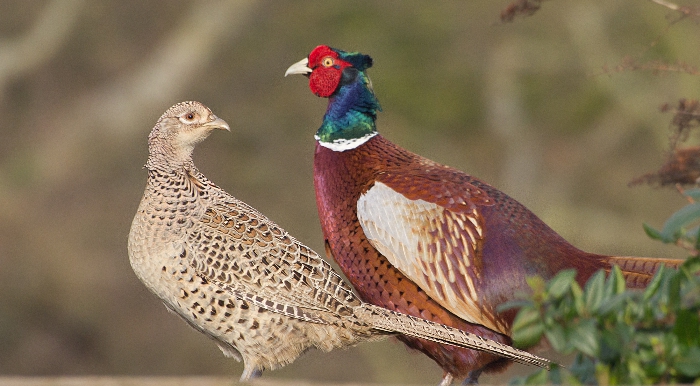Scientific name: Phasianus colchicus
Family: Phasianidae
Appearance: The adult male common pheasant of the nominate subspecies, Phasianus colchicus colchicus, is 60–89 cm (24–35 in) in length with a long brown streaked black tail, accounting for almost 50 cm (20 in) of the total length. The body plumage is barred bright gold or fiery copper-red and chestnut-brown plumage with iridescent sheen of green and purple; but rump uniform is sometimes blue. The wing coverage is white or cream and black-barred markings are common on the tail. The head is bottle green with a small crest and distinctive red wattle. P. c. colchicus and some other races lack a white neck ring. Behind the face are two ear-tufts, that make the pheasant to alert. The female (hen) and juveniles are much less showy, with a duller mottled brown plumage all over and measuring 50–63 cm (20–25 in) long including a tail of around 20 cm (7.9 in). Juvenile birds have the appearance of the female with a shorter tail until young males begin to grow characteristic bright feathers on the breast, head and back at about 10 weeks after hatching.
Natural history and trivia: Pheasants are native to Asia, but have been introduced to many other places as a game bird, bred and hunted for sport. They are a mostly ground based species, but roost in trees at night. They eat a wide variety of food, from plant matter to small animals like snakes or lizards.

(C) Ian (shared under a CC BY-NC 2.0 license)

 English (United Kingdom)
English (United Kingdom)  Nederlands (nl-NL)
Nederlands (nl-NL)  Magyar
Magyar  Deutsch (Deutschland)
Deutsch (Deutschland)  Croatian (Hrvatski)
Croatian (Hrvatski)  Polski (PL)
Polski (PL)  Español (España)
Español (España)